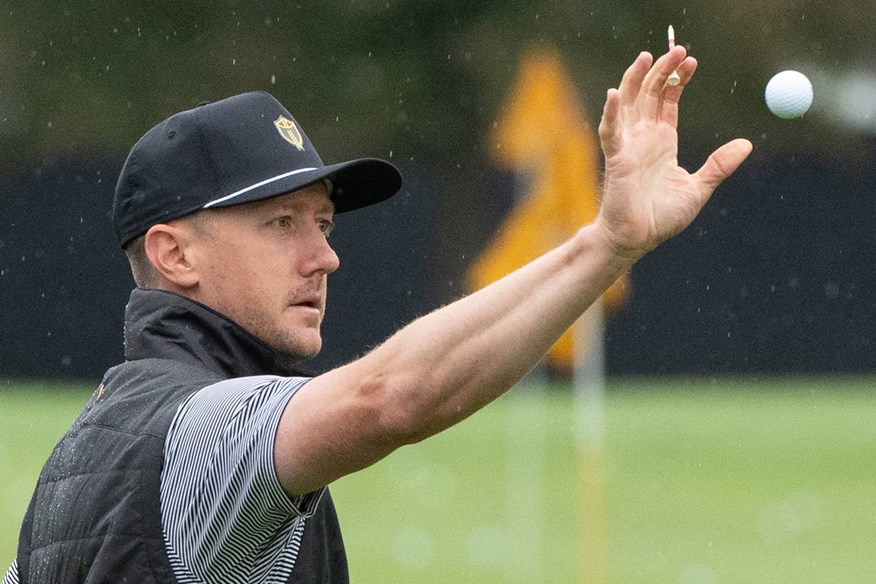Golfers with fast swing speeds can gain 14.1 yards on drives just by switching to this golf ball
Last updated:
Our test data shows which ball golfers with fast swings should be using.
Golfers with fast swing speeds don’t often have to worry about distance. But that doesn’t mean they should be surrendering it needlessly by playing the wrong golf ball.
The recent Today’s Golfer Robot Golf Ball Test found that choosing the best golf ball for your swing speed can make a huge difference to the carry distance of your drives – not to mention the distance of your 7-iron and wedge shots.
The results showed that golfers with slow swing speeds can gain 8.6 yards by changing golf ball, while those with average swing speeds can gain 10.6 yards. But it’s golfers with fast swing speeds who stand to gain the most. If you generate driver clubhead speeds of 115mph – which is close to PGA Tour average – you could gain as much as 14.1 yards just by changing the golf ball you play.
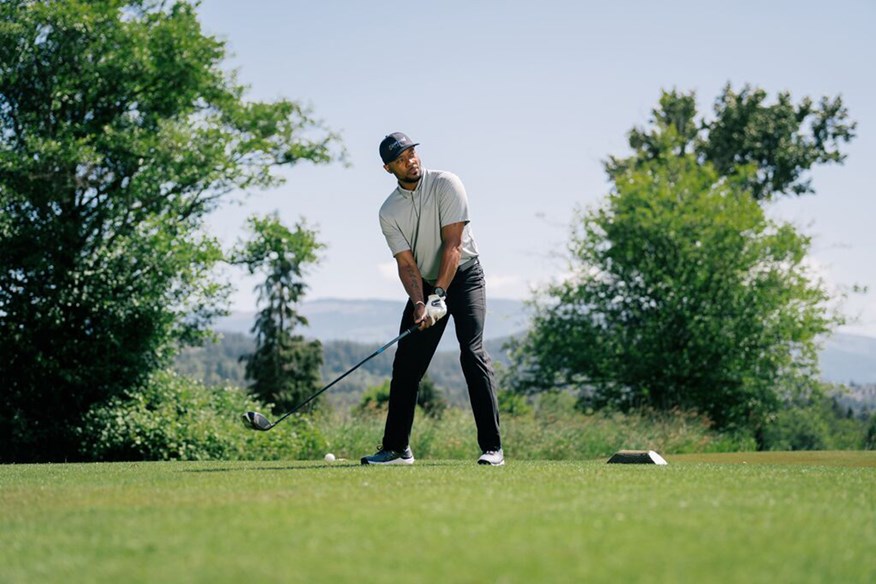
That means you’ll be hitting at least one club less for your approach shots, which data (and common sense) shows will mean you’ll hit more greens in regulation and shoot lower scores.
There’s also the fact that a better-performing ball will carry further on your approach shots as well as your drives. The robot test results showed the difference with a 7-iron can be as much as 8.7 yards. If you gain 14 yards on your drives and close to nine yards on your iron shots, you’ve effectively just made every hole almost 23 yards shorter. That’s like moving up at least one set of tees, if not more, which you don’t need me to tell you makes the course play considerably easier.
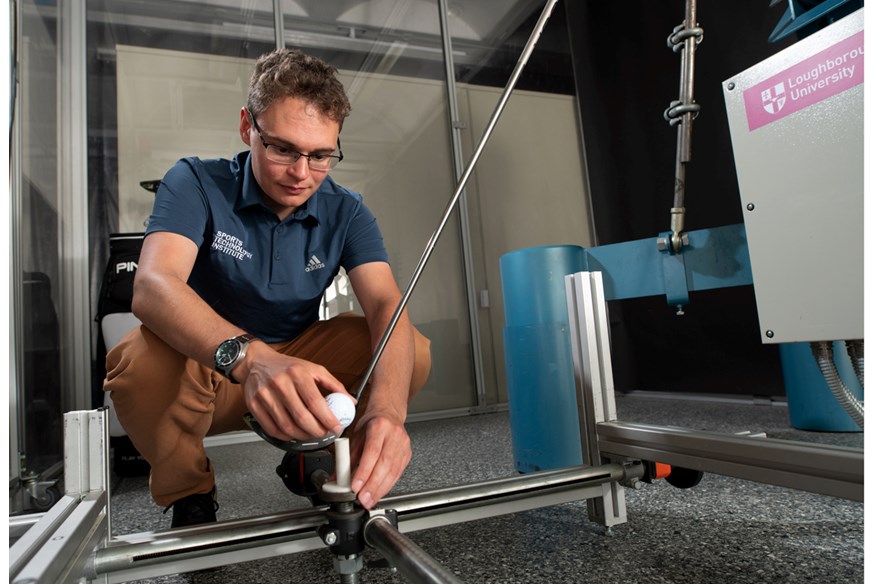
How we tested the golf balls
The recent Today’s Golfer Robot Golf Ball Test measured and compared 24 leading golf balls across every conceivable performance metric. Among those was distance. The test included hitting balls with driver at 85mph, 100mph, and 115mph – to see how different golf balls performed at different swing speeds – and with a 7-iron and pitching wedge. It’s the 115mph speed we’ll focus on here to see which balls perform best for golfers fortunate enough to have a fast swing speed.
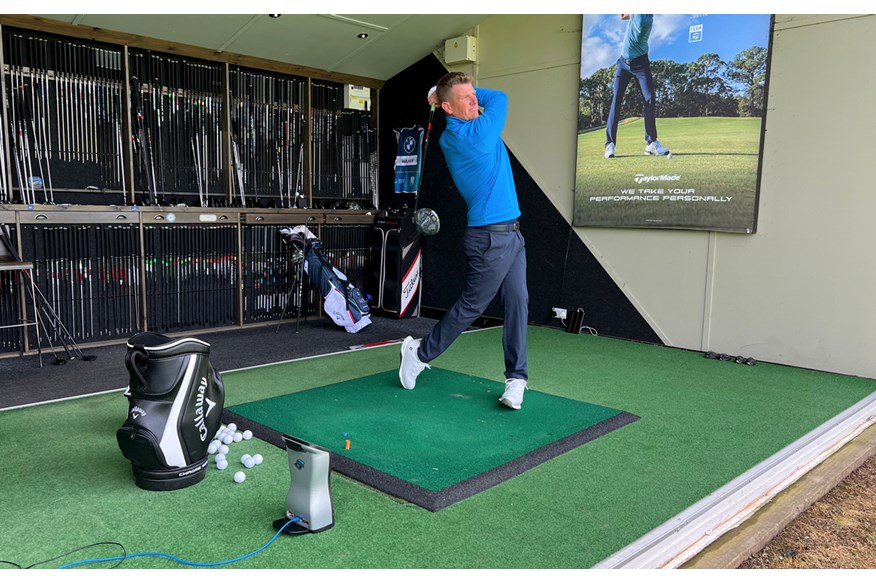
Gain driver distance by switching golf ball
At 115mph clubhead speeds, the Callaway Chrome Tour X generated the longest driver carry distance of all the balls on test, registering 283.2 yards. It was 14.1 yards longer than the TaylorMade SpeedSoft, which produced the shortest carry distance at this speed, clocking just 269.1 yards.
Its performance with driver was one of the reasons our Equipment Editor deemed the Callaway Chrome Tour X “arguably the best golf ball of 2024”.
| Ball Speed (MPH) | Launch Angle (DEG) | Backspin (RPM) | Height (YDS) | Descent Angle (DEG) | Carry Distance (YDS) | Shot Area (SQ YDS) | |
| Callaway Chrome Tour X | 166.6 | 11.6 | 2155 | 59.7 (Highest) | 32.8 | 283.2 (1) | 31.2 (3) |
| Wilson Staff Model | 167.1 (2) | 11.4 | 2079 | 59.3 | 31.9 | 282 (2) | 50.5 |
| Wilson Staff Model X | 167.2 (1) | 11.3 | 2084 | 59.3 | 31.7 | 281.7 (3) | 38.6 |
| Callaway Chrome Tour | 166.5 | 11.3 | 2140 | 59.2 | 31.9 | 281 | 54.2 |
| Seed SD 02 | 165.8 | 11.4 | 2137 | 59 | 32.1 | 280.4 | 60.3 |
| Vice Pro Plus | 166.3 | 11.5 | 2064 | 58.8 | 31.7 | 280.3 | 35.4 |
| TaylorMade TP5x | 167 (3) | 11.1 | 2073 | 59 | 31.2 | 280.2 | 33.1 |
| Vice Pro | 165.8 | 11.4 | 2103 | 58.7 | 31.8 | 279.5 | 40 |
| Seed SD 01 | 165.4 | 11.5 | 2125 | 58.8 | 32.1 | 279.5 | 30 (2) |
| Vice Tour | 165.5 | 11.5 | 2072 | 58.4 | 31.8 | 278.9 | 52.4 |
| TaylorMade TP5 | 164.8 | 11.7 | 2080 | 58.3 | 32.1 | 278.3 | 86 |
| Titleist Pro V1 | 165.9 | 11.2 | 2066 | 58.3 | 31.1 | 278.1 | 29.5 (1) |
| Titleist Pro V1x | 166.7 | 11.1 | 2048 | 58.3 | 30.1 | 277.9 | 74.6 |
| Snell Prime 4.0 | 165.3 | 11.3 | 2111 | 58.3 | 31.4 | 277.8 | 63.4 |
| Snell Prime 3.0 | 165.4 | 11.5 | 2024 | 58.1 | 31.3 | 277.5 | 111.3 |
| Seed SD X1 | 164.7 | 11.3 | 2124 | 58.1 | 31.5 | 277 | 41.1 |
| Kirkland Signature V3 | 164.8 | 10.5 | 2296 (Highest) | 58.6 | 31.3 | 276.6 | 45.1 |
| Callaway Chrome Soft | 163.9 | 11.8 | 2079 | 57.7 | 31.9 | 276 | 174.8 (Largest) |
| Snell Prime 2.0 | 163.5 | 11.3 | 2226 | 58 | 32 | 275.7 | 130.5 |
| Vice Pro Air | 163.6 | 11.6 | 2082 | 57.5 | 31.6 | 275.2 | 60.3 |
| Srixon Q-Star Tour | 163.6 | 11.7 | 2077 | 57.5 | 31.6 | 275.1 | 69.4 |
| Srixon Distance | 164.7 | 11.4 | 2000 | 57.3 | 30.7 | 274.8 | 64.5 |
| Srixon AD333 | 162.7 | 11.4 | 2047 | 56.5 | 30.6 | 270.9 | 85.1 |
| TaylorMade SpeedSoft | 161.7 | 11.7 | 1984 (Lowest) | 55.8 | 30.5 | 269.1 | 33.3 |
| AVERAGE | 165.2 | 11.4 | 2095 | 58.3 | 31.5 | 277.8 | 62.3 |
The Wilson Staff Model (282 yards) and Wilson Staff Model X (281.7 yards) came in second and third for carry distance at this swing speed, while the Callaway Chrome Tour, Seed SD 02, Vice Pro Plus, and TaylorMade TP5x all also clocked in at over 280 yards.
Alongside the TaylorMade SpeedSoft, other balls that failed to deliver good driver distance at 115mph clubhead speeds were the Srixon AD333, Srixon Distance, Srixon Q-Star Tour, Vice Pro Air, and Snell Prime 2.0. Those models all came in under 276 yards.
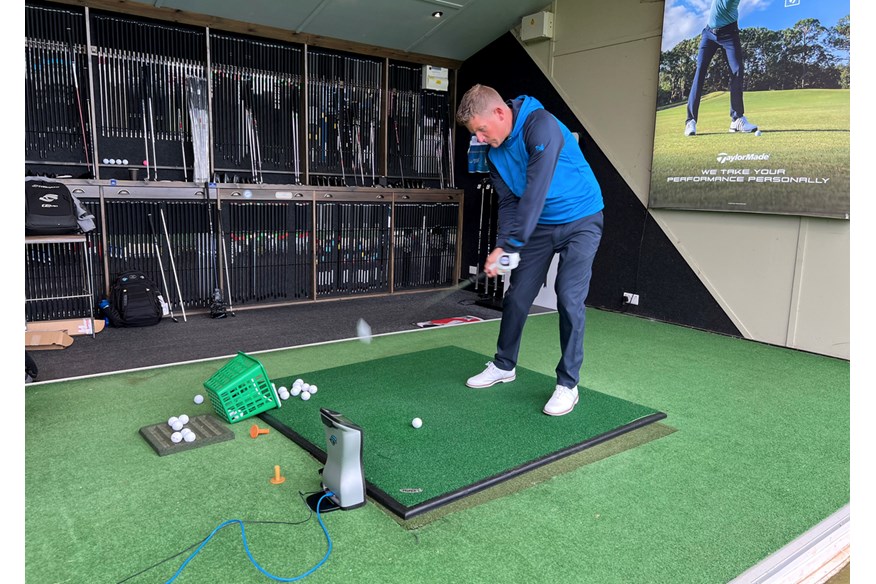
Gain iron distance by switching golf ball
The Srixon Q-Star Tour, Vice Pro Air, Wilson Staff Model, and Vice Tour were the longest golf balls when hit with a 7-iron. They were almost nine yards longer than the shortest ball.
| Ball Speed (MPH) | Launch Angle (DEG) | Backspin (RPM) | Height (YDS) | Descent Angle (DEG) | Carry Distance (YDS) | Shot Area (SQ YDS) | |
| Srixon Q-Star Tour | 108.1 | 21.3 | 4985 | 32 | 44.8 | 156.5 (T1) | 7.2 (1) |
| Vice Pro Air | 107.6 | 21.5 | 4788 (Lowest) | 31.8 | 44.6 | 156.5 (T1) | 15.1 |
| Wilson Staff Model | 108.7 (1) | 21.1 | 5256 | 32.1 | 45.2 | 156.4 (3) | 13.3 |
| Vice Tour | 107.9 | 21.4 | 4967 | 31.9 | 44.9 | 156.3 | 17.2 |
| Seed SD 01 | 108.5 (2) | 21 | 5314 | 31.9 | 45.1 | 155.8 | 9.5 |
| Seed SD 02 | 108.2 (T3) | 21.1 | 5188 | 31.9 | 45 | 155.8 | 37.1 |
| Vice Pro | 107.7 | 21.1 | 5103 | 31.7 | 44.7 | 155.2 | 8.4 |
| Vice Pro Plus | 108.2 (T3) | 21 | 5379 | 31.7 | 45.1 | 154.9 | 9.9 |
| Snell Prime 4.0 | 107.2 | 21.1 | 4973 | 31.6 | 44.3 | 154.8 | 10.5 |
| TaylorMade TP5x | 108 | 20.7 | 5468 | 31.6 | 44.8 | 154.2 | 13.4 |
| Callaway Chrome Soft | 107.2 | 21.2 | 5173 | 31.4 | 44.7 | 154.1 | 18.5 |
| TaylorMade SpeedSoft | 107.2 | 21.2 | 5185 | 31.5 | 44.7 | 154.1 | 41.4 (Largest) |
| Callaway Chrome Tour | 107.7 | 20.8 | 5384 | 31.5 | 44.7 | 154 | 10 |
| Snell Prime 3.0 | 106.9 | 21 | 5145 | 31.3 | 44.4 | 153.5 | 24.6 |
| Srixon Distance | 107 | 21 | 5306 | 31.3 | 44.6 | 153.1 | 38.7 |
| Srixon AD333 | 106.9 | 21.1 | 5276 | 31.3 | 44.7 | 153.1 | 29 |
| TaylorMade TP5 | 107.7 | 20.7 | 5672 | 31.4 | 45 | 152.9 | 16.6 |
| Titleist Pro V1 | 107.5 | 20.7 | 5594 | 31.2 | 44.8 | 152 | 8.2 (3) |
| Wilson Staff Model X | 108.1 | 20.3 | 6084 | 31.3 | 45.2 | 151.8 | 7.8 (2) |
| Snell Prime 2.0 | 106.5 | 20.7 | 5461 | 31 | 44.4 | 151.4 | 8.7 |
| Seed SD X1 | 107.1 | 20.4 | 5771 | 31.1 | 44.7 | 151.3 | 15.8 |
| Titleist Pro V1x | 107.1 | 20.4 | 5835 | 31 | 44.7 | 151 | 8.3 |
| Callaway Chrome Tour X | 107.6 | 20.1 | 6193 (Highest) | 31 | 44.9 | 150.5 | 16.2 |
| Kirkland Signature V3 | 106 | 19.7 | 6109 | 30.4 | 43.9 | 147.8 | 17.2 |
| AVERAGE | 107.5 | 20.9 | 5400 | 31.4 | 44.7 | 153.6 | 16.8 |
There’s a lot more to iron performance than distance, but if you can gain distance off the tee and with approach shots – without giving up anything else – it will make the game easier.
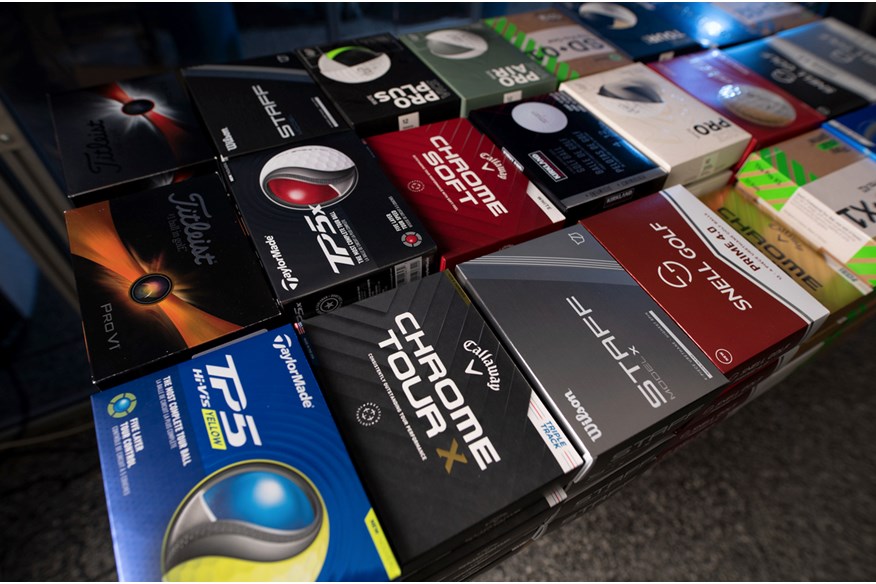
Should you switch golf ball?
Even if the data doesn’t compel you to switch to the Callaway Chrome Tour X, it’s worth seeing how the golf ball you’re using performs and how much you could gain by switching to a different model.
If you’re happy that the performance you get from your current golf ball does what you want, great – you’re now using the same ball as before but with the added reassurance that the numbers back up your decision. If, however, the data reveals that you could get improved performance by switching ball, it’s one of the quickest, easiest, and cheapest ways to get better results out on the course.
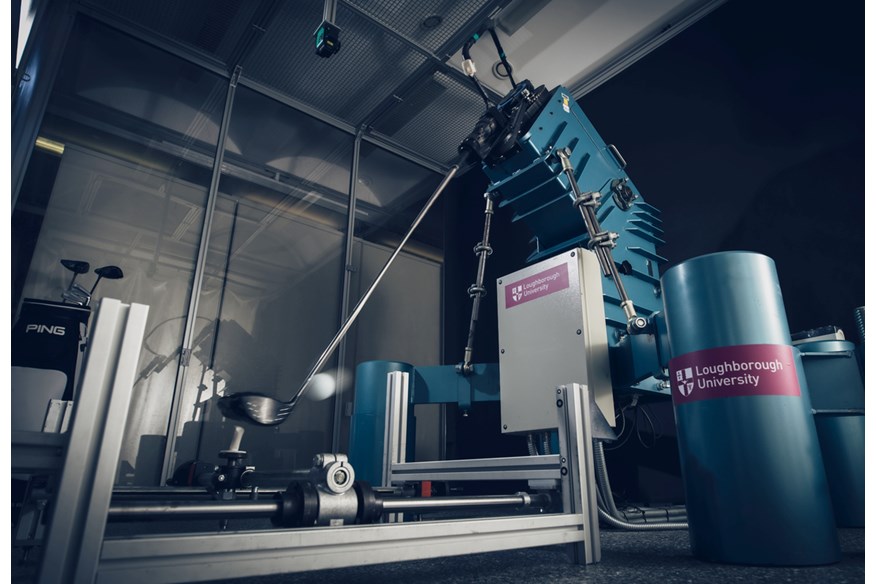
But… I’m not a robot
If we had $1 for every time someone said we should use real golfers instead of a robot for testing, we’d have enough money to buy a whole army of the $100,000 robots we use. A whole army of robots that can pelt golf balls at 200mph with unerring accuracy… quite a scary prospect, when you think of it.
Anyway, we’re not looking to take over the world with our robot army, but we do know from years of experience that a robot is the only way to guarantee the consistency of strike required to isolate the one variable we are trying to test: the performance of the golf ball. Even the world’s best golfers can’t hit a ball exactly the same way, time after time, which brings in other variables. That’s why every golf manufacturer uses a robot when developing golf balls and it’s why we use a robot to test those golf balls head-to-head.
Thanks to the robot’s adjustability it’s possible to control lie angle, swing path, face angle, attack angle, impact location, hip rotation, and wrist action at swing speeds from 5 – 130 MPH. There simply isn’t a better swinger out there – not even among the world’s best golfers.
When picking the best golf balls, we use human testing – both on a launch monitor and on the course – to measure intangibles like sound and feel, but for pure data, a robot is a must-have.
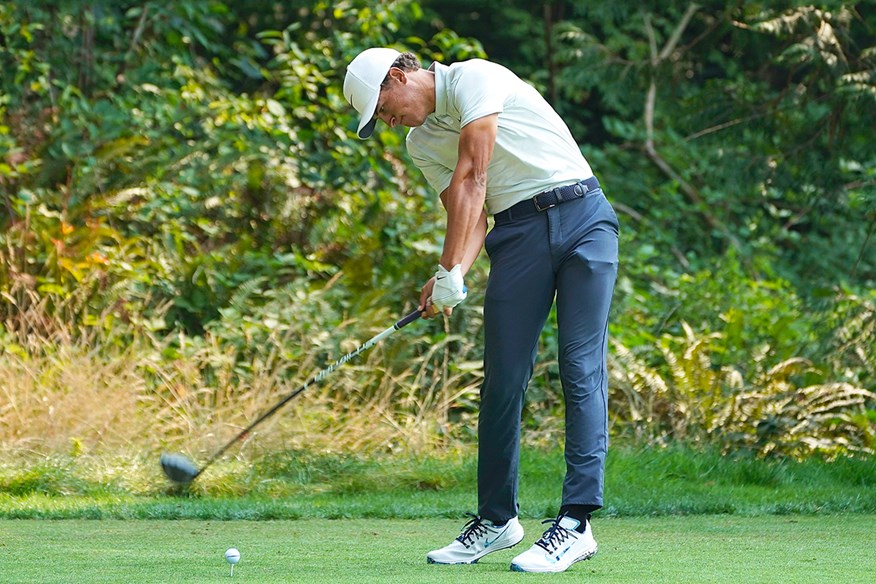
Not all fast golf swings are the same
There’s more to your golf swing than just swing speed. Two golfers with the same 115mph swing speed could have quite different impact conditions and therefore produce a different launch angle, spin rate, and carry distance. As a result, those two golfers might get the best results from slightly different golf balls. For instance, if you generate too much spin with your driver, one of the best low-spin golf balls may give you more distance.
That said, we’d be surprised if a ball that ranks near the bottom for distance in our test produces the most distance for you.
Get yourself the best golf ball for fast swing speeds
Price per ball $6.11 / 0.30c per yard
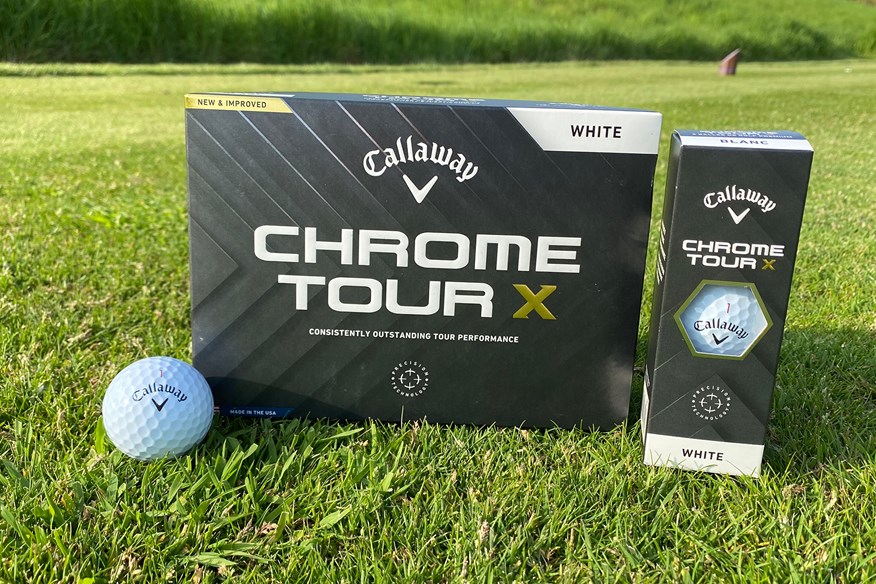

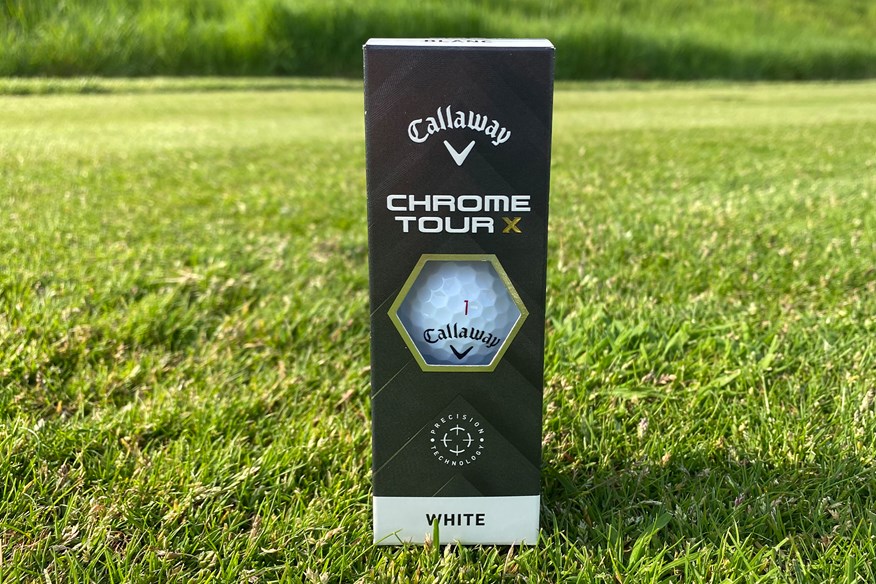
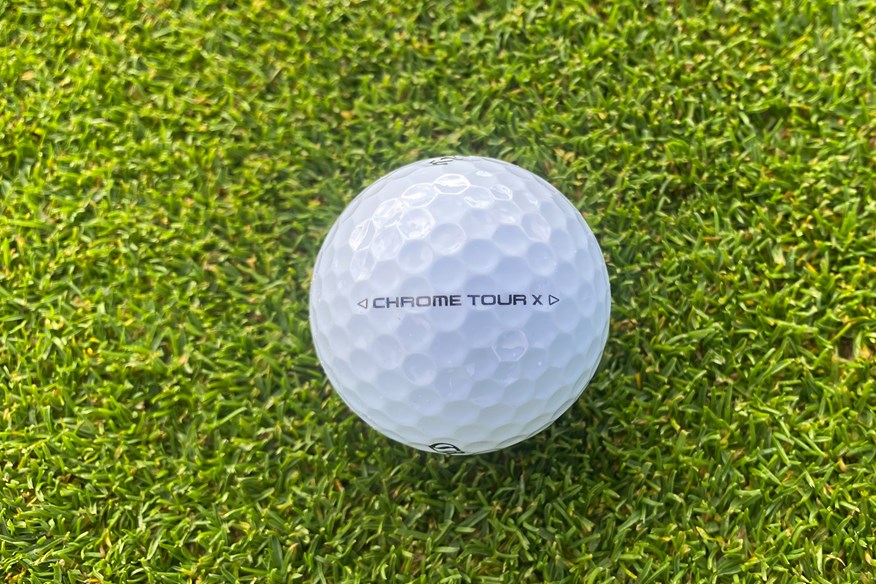
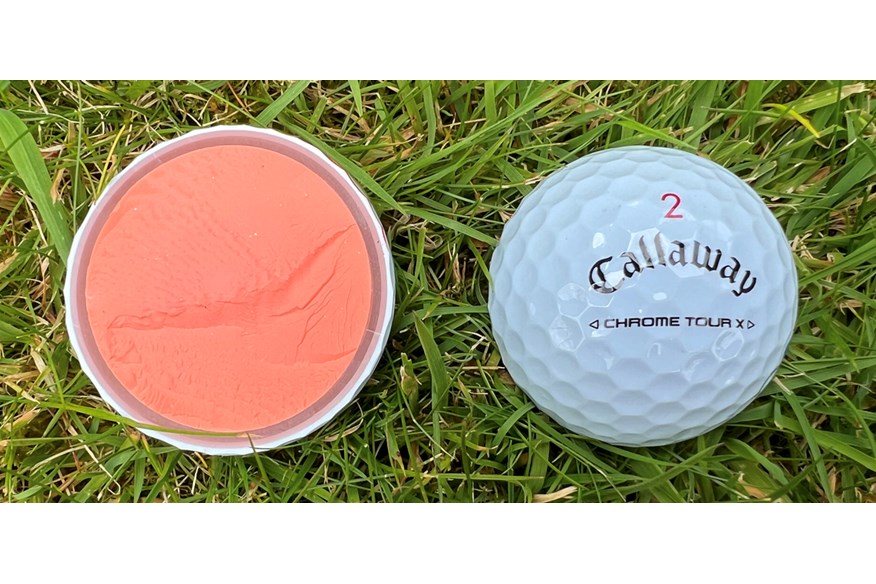
The Chrome Tour X has a compression of 98 and the company reports seeing ball speed gains of 1.5 – 3mph during internal testing with this model. Interestingly the speed gains don’t come from a firmer compression, as this model is the same compression as the previous Chrome Soft X.
Golfers should expect 300 RPM more backspin up to 50 yards from the surface of the green, the all-important scoring zone for good players.
Read our full Callaway Chrome Tour X (2024) golf ball review.
Pros
- Long off the driver
- High spin with the irons and wedges
- Produced our third smallest shot area average
Cons
- In 2024 Callaway is an expensive tour ball option
| Construction | 4-Piece |
| Cover | Urethane |
| Cost per ball | $6.11 |
